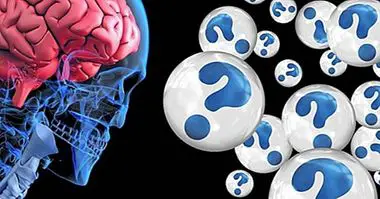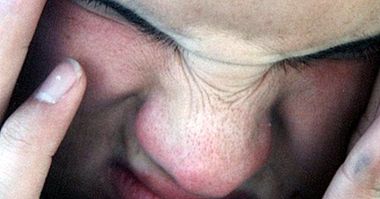Positive Psychology: how can you be really happy?
Positive Psychology is one of the most recent trends of psychology, and it is not strange that it has aroused much interest. It is based on the study of the experiences and positive traits of individuals, as well as their strengths, virtues, motivations and abilities; how they help improve their quality of life and develop human potential.
Generally, psychological theories focus on pathologies and negative behaviors. On the contrary, Positive Psychology proposes strategies to achieve and optimize people's strengths. Thus, it proposes to focus attention more towards prevention than towards treatment.
Next we will see in detail what are the foundations of Positive Psychology , how it appeared and what objectives are proposed.
- Related article: "15 essential positive psychology books"
This is how Positive Psychology appeared
The background of Positive Psychology goes back to the 20s and 30s in the works of Terman and Watson, which already mentioned some important concepts and themes such as student talent, infant care and psychological factors involved in marital happiness .
Before the Second World War, psychologists focused on actions that contributed to make the life of individuals more productive and full, so identified and reinforced talents and strengths in patients to face different situations.
However, as a consequence of the war the general approach of psychology was changed so that it was mainly concerned with evaluating mental disorders and trying to alleviate human suffering. In opposition to this tendency centered in the pathology, authors like Carl Rogers and Abraham Maslow within the humanist current, worked some ideas of strengths and happiness of the human being, setting a precedent from which Positive Psychology would later emerge.
At the end of 1990, Martin Seligman, American psychologist and educator, decided to give a twist to the dominant approach and presented for the first time his proposal of Positive Psychology in the ceremony in which he was named president of the American Psychiatric Association (APA for short). in English) in 1998. From that stage, many researchers oriented their work towards the study of the psychological potentialities of the human being.
Flow, strengths and positive emotions
Another of the important authors is Mihaly Csikszentmihalyi , a Hungarian psychologist who proposed the term flow as a positive mental state, as well as studies of factors that contribute to the motivation, challenge and success of individuals.
One of the fundamental components within the theory is the temperament, since it is considered as one of the most important predictors of the levels of positive experiences that a person will feel. There are also character strengths , which are traits or psychological characteristics that occur in different situations over time and their consequences are usually positive. Some are: optimism, interpersonal skills, faith, ethical work, hope, honesty, perseverance and ability to flow.
In addition, from Positive Psychology a categorization of positive emotions was made , depending on the time in which they are visualized: in the present they are joy, tranquility, euphoria, pleasure and the optimal experience; those of the past are satisfaction, complacency, personal fulfillment, pride and serenity; and in the future there is optimism, hope, faith and confidence.
There is currently enough evidence that positive emotions favor the health, personal growth and well-being of the individual. Increase the intellectual, physical and social resources of people so that they can respond in the best way when unexpected or difficult situations arise.
- Maybe you're interested: "The 8 types of emotions (classification and description)"
The conquest of happiness, according to Seligman
On the other hand, Seligman proposed the model "The Three Ways to Happiness" (1999) which were:
- Pleasant life
- Committed life
- Meaningful life
Several years later he changed his proposal a bit and created the PERMA model (for its acronym in English), with the 5 components that are present in people who claim to be happy. With this he changed his object of study, from happiness to well-being. Each element must comply with 3 properties to be considered within the theory:
- That contributes to the welfare.
- That many people choose it for their own good, not just to get any of the other variables.
- That is defined and measured independently of the rest of the variables of the model.
These are the components:
1. Positive emotions
Recognize the benefits of positive emotions in all aspects of the individual's life.
2. Commitment
Make a commitment with ourselves, focus on our strengths and seek to have optimal experiences . Generation of pleasure derived from the commitment to the effective task and the ability to experience experiences of flow.
3. Positive relationships
Increase our social skills to interrelate with other people.
- Related article: "The 14 main social skills to succeed in life"
4. Sense
Search the meaning, meaning and purpose of our life.
5. Achievement
Personal agency that allows the growth and development of human capabilities.
Another of the theories of Positive Psychology is the Flow theory, proposed by Csikszentmihalyi. The flow, in simple terms, is the state in which the person is completely delivered to an activity for pleasure Everything flows and time flies. It usually occurs when the balance between the challenges of the task and the skills the individual has to solve it is reached.
Barbara Fredrickson and the proposal Enlargement - Construction
One more theory is the proposal Ampliación - Construcción, by Dr. Bárbara Fredrickson , social psychologist. The main idea is that positive emotions cause changes in cognitive activity, expand the possibilities of action and improve physical resources. According to this model, there are 3 sequential effects of positive emotions:
- Extension: broaden trends of thought and action.
- Building: the construction of personal resources is favored to face difficult or problematic situations.
- Transformation: the individual becomes more creative, shows a deeper knowledge of situations, is more resistant to difficulties and socially better integrated. It reaches an ascending spiral that leads to the experimentation of new positive emotions.
This new experimentation based on Positive Psychology increases personal resources, which can be used in different contexts and under other emotional states. The traditional models of psychology, focused on negative emotions, deal with how these have the function of activating basic defense mechanisms for survival. Instead, this model presents positive emotions as Drivers of personal growth and construction of different thoughts and actions, which can be used depending on the present situation.
- Maybe you're interested: "Personal Development: 5 reasons for self-reflection"
Its use as a psychological intervention
The main fields of application of the proposal are the clinical, health and educational areas. In the clinic and health area, what is sought is the generation of prevention strategies and treatment of problems derived from negative emotions, mainly depression, stress and anxiety . It is proven that patients with affective and anxiety disorders have lower performance in daily tasks and it is much more difficult to solve problems. The goal is to promote positive emotions to create a barrier against psychological disorders.
Within the educational one, focuses on the extrinsic motivation of students , academic motivation, generation and optimization of strengths. This favors the students' reactions to situations that they have to face. Furthermore, in those institutions that promote the achievement of goals to obtain rewards, they increase motivation and decrease the conflicting attitudes of children and young people.
At present is beginning to be implemented in the organizational area ; The objective is to provide tools to generate strategies to improve the work environment and therefore the efficiency in processes and greater productivity on the part of employees.
And to learn more about Positive Psychology ...
Here are some recommendations of books in which the main theme revolves around positive psychology:
- "Flow (Flow)": a psychology of happiness, by Mihaly Csikszentmihalyi.
- "The authentic happiness", by Martin E. P. Seligman.
- "The science of well-being: foundations of a positive psychology", by Carmelo Vázquez and Gonzalo Hervás.
- "Intelligent optimism: psychology of positive emotions", several authors.
- "Overcoming adversity: the power of resilience", by Luis Rojas Marcos.
- "Flow in business", by Mihaly Csikszentmihalyi.
- "Is your cube full? Strategies to enhance their positive emotions ", by Tom Rath and Donald O. Clifton.
- "Positive Psychology: the scientific and practical explorations of human strengths", several authors.
- "The science of happiness", by Sonja Lyubomirsky.
- "The uselessness of suffering", by María Jesús Álava Reyes.
- "The life that blooms", by Martin E. P. Seligman.
- "Psychologically speaking", several authors.
- "The trap of happiness", by Russ Harris.
- "The habits of a happy brain", by Loretta Graziano.
- "Positive psychology: the conscience of happiness", by Alan Carr.



















